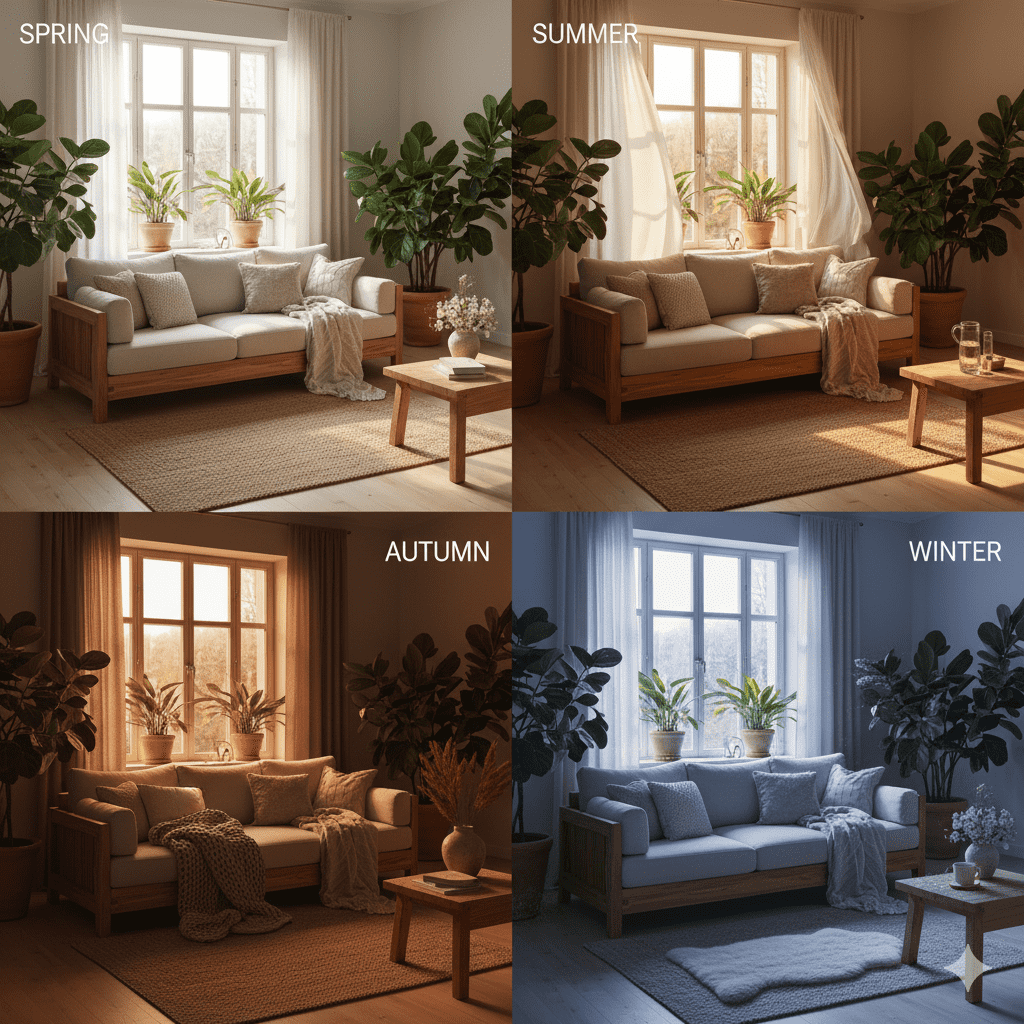Our ancestors lived in profound connection with seasonal rhythms, their daily lives naturally aligned with nature’s cycles. Modern life, with its climate-controlled environments and artificial lighting, can disconnect us from these ancient patterns. Natural materials in our homes offer a bridge back to seasonal awareness and its accompanying benefits for our mental and physical health.
Wood furniture becomes a barometer of seasonal change, expanding and contracting with humidity shifts that mark weather transitions. Far from being problematic, these subtle movements connect us viscerally to the world outside our windows. The slight creaking of wooden floors on dry winter mornings or the swelling of doors during humid summer evenings remind us that our homes are part of the natural world, not separate from it.
Natural textiles shift with seasons in ways that synthetic materials cannot replicate. Linen becomes essential during summer’s heat, its loose weave and moisture-wicking properties creating comfort that air conditioning alone cannot provide. Wool emerges in autumn as both practical insulation and emotional comfort, its lanolin content naturally regulating humidity while providing the psychological warmth we crave as daylight diminishes.
The visual changes in natural materials throughout the year create subtle but important psychological cues. Wood colors deepen during humid seasons and lighten during dry periods. Natural stone feels warmer in summer and cooler in winter, not just in temperature but in appearance. These variations help our circadian rhythms stay aligned with seasonal patterns.
Maintenance routines for natural materials create seasonal rituals that mark time’s passage meaningfully. Oiling wooden pieces in spring, adjusting natural fiber textiles for summer breathability, preparing stone surfaces for winter’s lower humidity – these tasks connect us to our homes’ needs and nature’s cycles simultaneously.
The aromatherapy effects of natural materials change seasonally too. Cedar furniture releases more scent during humid months, while pine and oak become more fragrant in winter’s dry air. These natural perfumes provide subconscious cues about seasonal transitions that synthetic materials simply cannot offer.
Living seasonally through natural materials isn’t about discomfort or inconvenience – it’s about enriching our daily experience through deeper connection to the natural world that sustains us.
